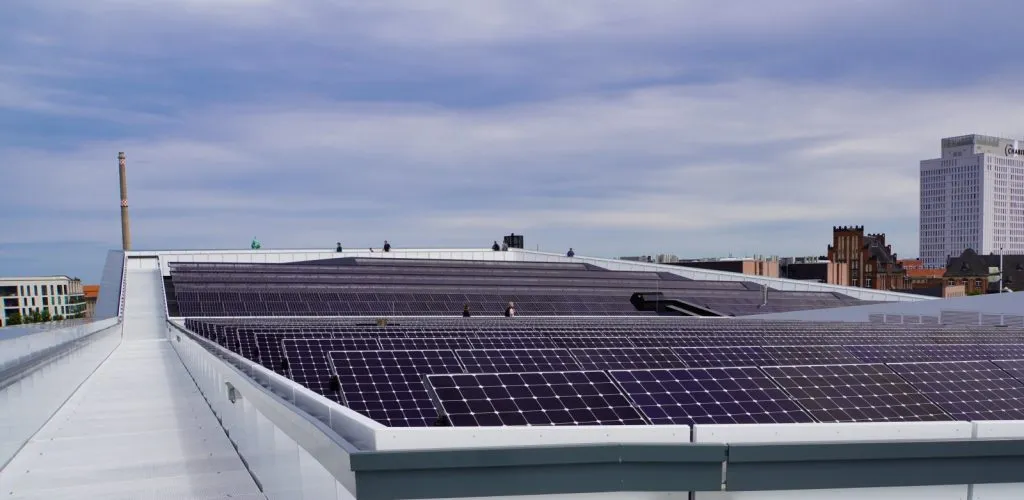In the heart of Berlin, a city known for its blend of history and innovation, Onyekachi Nwafor, a researcher at the Berlin School of Economics and Law, is making waves in the renewable energy sector. His recent study, published in *Solar Compass* (translated from German as *Solar Compass*), delves into the transformative potential of integrated photovoltaic (PV) applications, offering a beacon of hope for a sustainable future.
Integrated PV systems are not just about generating electricity; they are about seamlessly blending solar technology into the fabric of our daily lives. From the roofs and facades of buildings to agricultural fields and transportation infrastructure, these systems are redefining the way we think about energy generation and consumption.
Nwafor’s research highlights the rapid advancements in PV materials and efficiency. “We’re seeing breakthroughs like high-efficiency multi-junction cells and perovskite solar cells that are pushing the boundaries of what’s possible,” he explains. These innovations are not just academic exercises; they are paving the way for more efficient, cost-effective, and aesthetically pleasing solar solutions.
The study also showcases real-world case studies, demonstrating the successful integration of PV systems in various sectors. For instance, building-integrated PV (BIPV) technologies are transforming urban landscapes, turning skyscrapers and residential buildings into power generators. Meanwhile, agrivoltaic farms are proving that solar panels and agriculture can coexist, boosting both food production and energy generation.
But the benefits of integrated PV systems extend beyond technological advancements. Nwafor’s economic analysis reveals a dramatic decline in PV costs, making these systems increasingly viable for businesses and homeowners alike. “The return on investment for integrated PV systems is becoming more attractive by the day,” he notes. This economic viability, coupled with government incentives and favorable policies, is driving market growth and creating new business opportunities.
Moreover, the environmental impact of integrated PV systems is profound. By reducing our reliance on fossil fuels, these systems are significantly cutting carbon emissions and mitigating climate change. As Nwafor puts it, “Integrated PV systems are not just about generating clean energy; they’re about creating a sustainable future for all.”
The implications of this research are far-reaching. As integrated PV systems become more efficient, affordable, and widely adopted, they could revolutionize the energy sector. They could turn our cities into power plants, our farms into energy hubs, and our vehicles into mobile charging stations. In doing so, they could help us achieve a future where clean, renewable energy is not just an aspiration but a reality.
As we stand on the brink of this solar revolution, one thing is clear: the future of energy is not just bright; it’s integrated. And with researchers like Onyekachi Nwafor leading the way, that future is closer than ever.

